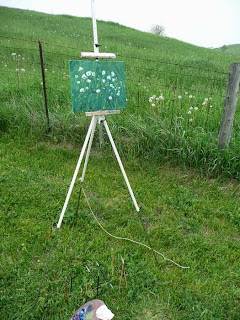Started 9 am Thursday May 24th, 2012. Painting Place the south shore of Little Rideau Lake at N44.68019 W76.31321.
A group of artists from the Rideau Lakes Artist Association got together to paint on Little Rideau Lake. The weather was terrific.
This view is looking northwest from the shoreline across Little Rideau Lake toward the village of Westport. Light southwesterly winds shaped the cumulus clouds into disjointed streets. The clouds occasionally cast shadows on the distant shoreline.
A group of artists from the Rideau Lakes Artist Association got together to paint on Little Rideau Lake. The weather was terrific.
This view is looking northwest from the shoreline across Little Rideau Lake toward the village of Westport. Light southwesterly winds shaped the cumulus clouds into disjointed streets. The clouds occasionally cast shadows on the distant shoreline.
http://fineartamerica.com/featured/little-rideau-lake-phil-chadwick.html
|




































